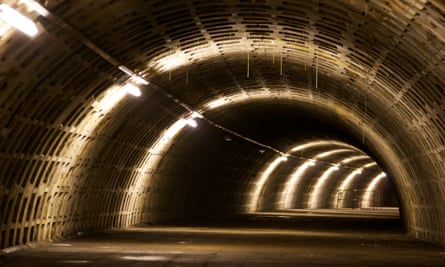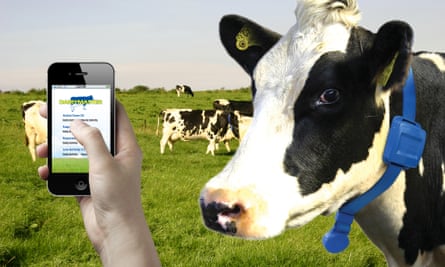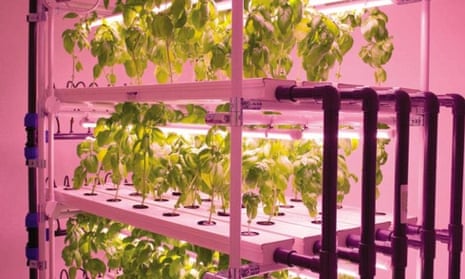VERTICAL FARMING
“I know it sounds utopian”, says Steve Fry, apologetically, as he explains the merits of multi-layer hydroponics. Known colloquially as “vertical” farming, the approach in which plants are grown in water instead of soil has grown significantly over the past 20 years. Fry, as head of hydroponics hardware firm HydroGarden, believes it is the next step in reforming the wasteful, polluting, oil-dependent aspects of the farming industry, and preparing for future threats to food security.
Inside HydroGarden’s Coventry warehouse is a demo of their system, featuring a carefully monitored environment with three long trolleys, each supporting four layers of narrow trays. Water containing a mixture of potassium, nitrogen and other nutrients flows down each tray, feeding the dozens of plants sown along it, while above them, low-energy LEDs enable optimum photosynthesis.
According to Fry, it can produce 2,000 butterhead lettuces in 28 days; a crop that would take three times as long in open soil.
But he admits it is not a “silver bullet”. Staple crops such as cereals cannot currently be grown vertically, and the foreseeable future of vertical farming is largely one of salads and herbs. The new method uses much less water and energy than open soil farming, and requires no pesticides or fungicides, but nevertheless, on most hydroponic farms, chemicals are used to sterilise the water, and some nutrients are synthesised.
The Soil Association also refuses to recognise hydroponic plants as organic; a source of frustration to Fry, who thinks changing the mindset of modern agriculture is paramount. “We need to start growing crops in peri-urban environments,” he says, envisioning a future where crops are grown “on the tops of buildings, in disused car-parks”, or anywhere, in fact, with ventilation and a power supply.

South London startup Growing Underground (GU) is testing the limits of this idea. In 2012, GU leased two vast former air-raid shelters under Clapham High Street to house a commercial hydroponic farm. Steve Dring and Chris Nelson, two of GU’s founders, claim that, come October, it will be the biggest multi-layer system in Europe, and when the tunnels reach full capacity they hope to produce 80,000 kg of produce per year. For now, just one semicircular bunker is in use, growing ‘micro-leaves’ - largely, they imagine, for restaurants.
Descending a rattling lift-shaft to a brick dungeon 100ft below the A3 is not what one typically identifies with the word ‘farm’. And yet the plants grown in the tunnel will be among the most chemical-free in London and, thanks to the minimal transport, some of the freshest. The first harvest will arrive in New Covent Garden market next month, although they plan to launch quietly. “Anything might go wrong; you can’t control nature,” says Steve. “Well,” Chris adds, glancing at the gleaming rows of trays, “up to a point you can.”
KB
DRIVERLESS FARMING

The farm manager of the near future watches a large tractor on a screen in his office. It has no driver but is manoeuvring itself around trees, precisely planting seeds to within a centimetre. Sensors measure soil moisture to a depth of 100cm and a mini weather station tells him the humidity and temperature.
He receives an automated text warning of a major storm approaching. His insurance company in the US automatically calculates from millions of bits of historical weather data that he may have to replant the field at a cost of £2,000. It offers him an instant quote. If a satellite confirms that the storm ruins his crop he will be paid instantly.
He switches to another screen where he can observe his herd of 500 cows. Each animal is being monitored for its milk yield, body weight, the food it has consumed and its location. Sensors on their collars indicate that one cow is behaving slightly unusually. The computer warns him that she is likely to be ill and could infect the others.
The technology for driverless, fully connected, practically people-less precision farming is thriving in the US and coming to Europe, says Antonio Marzia, vice president of Precision Solutions at CNH Industrial, makers of some of the world’s largest and most advanced farm machinery. He sees big data, machinery, climatology and agronomy all combining to increase productivity and reduce labour costs. “The technology is all here now. What was developed for very big farms is now applicable to mid-sized ones. But farmers don’t want decisions to be made by machines. They want help making decisions,” he says.

That help is becoming plentiful as Silicon Valley moves into agriculture. Drones can map and survey any piece of land; computers can link to weather archives; machines can minutely adjust the amount of herbicide they spray or fertiliser they spread on any acre. A combine harvester will not just cut a crop, but will record the amount harvested every second, and measure which square metre of land is the most fertile. A tractor can be programmed to work in the dark , or with any product.
The forerunner of the fully digital farm has just arrived in Pembrokeshire, South Wales, where cattle farmer e has a herd of 650 cows. He has thought about buying a robotic milking system but has decided to invest in a “moo monitor”, a device that fits on a collar and measures each animal’s temperature. “You can get technology to do just about anything on the farm now,” he says. “The monitor is able to detect whether a cow is ill or on heat. It saves me about £15,000 a year. It’s very accurate and should pay itself off in around three years. The main advantage is that it saves time and labour. It aids rather than replaces people” But, he adds, “It gives me a lot of data and updates itself all the time. That’s the problem , too. But you only use what data you need. I don’t think it could ever replace a good stockman.”
JV
MORE FARMING TECH
Windowfarms
If you live in a flat and have little or no garden, these vertical, mini-hydroponic systems allow you to grow mainly salad and small vegetables.
Robotic orange picker
A robot that is designed to scan the orange trees and pick ripe fruit.
Robobees
The smallest farming robots, robotic bees can pollinate a field of crops.
“Smart pills”
Essentially, a fitness tracker for cows in pill form, which offers farmers information on the cows’ temperature, appetite etc.
RD

Comments (…)
Sign in or create your Guardian account to join the discussion